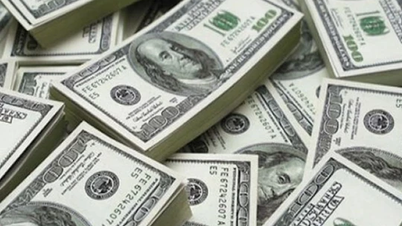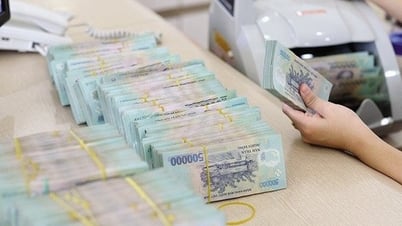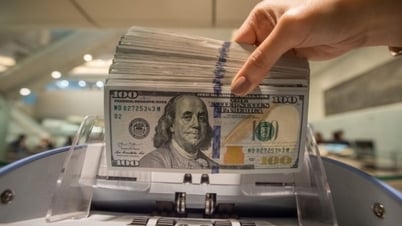DNVN - Matteo Lanzafame, Chief Economist at the Macroeconomic Research Department, Department of Economic Research and Development Impact of the Asian Development Bank (ADB), has just commented on the impacts of the US Federal Reserve's (Fed) decision to sharply cut interest rates on September 19 on the Asia-Pacific region.
The Fed’s recent rate cuts present both opportunities and challenges for central banks in the Asia- Pacific region. Policymakers need to adopt a balanced and country-specific approach to navigate inflationary pressures, exchange rate volatility and capital inflows, according to Matteo Lanzafame.

The Fed has begun its long-awaited monetary policy easing cycle with a 50 basis point cut. Federal Open Market Committee (FOMC) members expect another 50 basis point cut this year, with the easing policy extending into 2025.
The move could have significant consequences for the global economy, particularly for developing countries in the Asia- Pacific region. Inflationary pressures in the region have eased this year as commodity prices stabilize and the effects of last year’s monetary tightening are starting to be felt. As a result, many central banks in the region have paused their rate-hike cycles, and some have even begun cutting rates.
In formulating policy, emerging market central banks need to consider the interest rate differential with the US, which will affect capital flows and exchange rates. The Fed’s decision to cut interest rates provides an opportunity for central banks in the region to ease policy to stimulate demand and growth without worrying about capital outflows or exchange rate depreciation. However, with the Fed’s easing cycle uncertain in terms of pace and timing, the policy response in Asia-Pacific needs to be cautious and well-thought-out.
One option for central banks is to follow the Fed in cutting interest rates, which would support growth but also risk creating price pressures and encouraging excessive borrowing in highly indebted economies. Alternatively, central banks could adopt a tighter monetary stance by cutting rates more slowly or less than the Fed.
If interest rates remain low in the US, capital flows could flow into Asia-Pacific as investors seek more attractive yields, which could boost equity and bond markets and provide relief to vulnerable economies. However, increased capital flows could increase financial market volatility, especially for short-term portfolios.
In addition, increased capital flows could push up regional exchange rates against the US dollar, which would benefit oil- and import-dependent countries, helping to reduce price pressures and improve trade balances. For economies with US dollar-denominated debt, a weaker US dollar would help reduce their debt burden.
Fiscal policy can help cushion the impact of falling exports. Depending on fiscal space, stimulus measures could focus on boosting consumption, boosting activity in areas with large spillovers, while also investing in infrastructure, energy efficiency, climate adaptation and projects to address structural gaps. This would also boost the productive potential of the economy.
Lower US interest rates and the prospect of a weaker US dollar could reduce import costs, boost financial markets and attract capital flows to the region. However, these benefits come with risks of exchange rate volatility and rising inflationary pressures. Policymakers need to adopt a flexible approach, stay alert and proactively take advantage of opportunities while dealing with potential risks, said Matteo Lanzafame, an expert.
Viet Anh (t/h)
Source: https://doanhnghiepvn.vn/quoc-te/fed-ha-lai-suat-tac-dong-den-khu-vuc-chau-a-thai-binh-duong-ra-sao/20240930084117127



![[Photo] General Secretary To Lam attends the conference to review 10 years of implementing Directive No. 05 of the Politburo and evaluate the results of implementing Regulation No. 09 of the Central Public Security Party Committee.](https://vphoto.vietnam.vn/thumb/1200x675/vietnam/resource/IMAGE/2025/5/19/2f44458c655a4403acd7929dbbfa5039)
![[Photo] Panorama of the Opening Ceremony of the 43rd Nhan Dan Newspaper National Table Tennis Championship](https://vphoto.vietnam.vn/thumb/1200x675/vietnam/resource/IMAGE/2025/5/19/5e22950340b941309280448198bcf1d9)

![[Photo] Close-up of Tang Long Bridge, Thu Duc City after repairing rutting](https://vphoto.vietnam.vn/thumb/1200x675/vietnam/resource/IMAGE/2025/5/19/086736d9d11f43198f5bd8d78df9bd41)
![[Photo] President Luong Cuong presents the 40-year Party membership badge to Chief of the Office of the President Le Khanh Hai](https://vphoto.vietnam.vn/thumb/1200x675/vietnam/resource/IMAGE/2025/5/19/a22bc55dd7bf4a2ab7e3958d32282c15)

























![[Photo] Prime Minister Pham Minh Chinh inspects the progress of the National Exhibition and Fair Center project](https://vphoto.vietnam.vn/thumb/1200x675/vietnam/resource/IMAGE/2025/5/19/35189ac8807140d897ad2b7d2583fbae)
































































![[VIDEO] - Enhancing the value of Quang Nam OCOP products through trade connections](https://vphoto.vietnam.vn/thumb/402x226/vietnam/resource/IMAGE/2025/5/17/5be5b5fff1f14914986fad159097a677)





Comment (0)